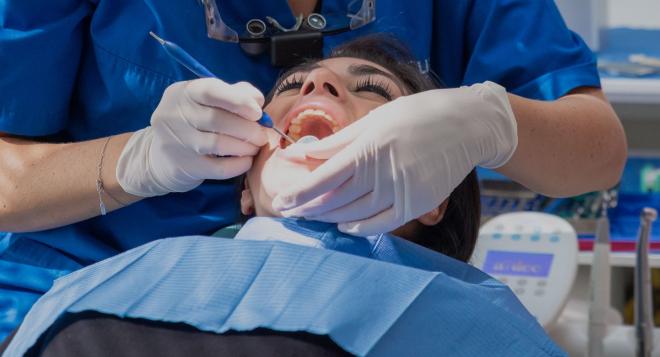
We all want a dazzling smile, however small pathologies may seem to alter the esthetic aspect of our teeth. Fluorosis is a disease that causes small yellow or white stains to appear on the tooth enamel. Treatments are available that can help you reclaim a winning smile without posing any major health risks.
Fluorosis: What is it ?
Teeth are part of the hard organs of our body. The tooth consists of two parts: the root that is linked to the jawbone and covered by the gum, and the crown that forms the emerged part of the tooth.
Teeth are mainly composed of minerals, specifically calcium hydroxyapatite crystals. The tooth enamel protects the entire outer part of the tooth, and that's what gives it that pearly white color. This enamel can change and start losing its luster when the tooth is damaged.
Fluorosis is a condition that affects the teeth of the enamel. It manifests itself as matt white or yellow tooth stains. There's several stages of fluorosis and small opaque white spots appear on the teeth in cases of mild fluorosis. In instances of moderate fluorosis, the entire tooth is covered by a white or brownish stain. In addition, in cases of severe fluorosis, the teeth are yellow or brown and have fine striations along the teeth.
Fluorosis: The causes
Fluorosis, as the name implies, is the result of a high intake of fluoride during dental development or, alternatively, due to its mineralisation.
Fluoride is a trace mineral that solidifies the tooth enamel to make it more impervious to attacks by bacteria that can cause cavities.
Fluoride has been commonly prescribed for children between 6 and 12 years of age since the 1970s to strengthen their teeth. Fluoride may be typically applied with toothpaste or orally with fluoride salt concentrate tablets. Fluoride is naturally found in water, fish, spinach or even salt.
However, the excess of fluoride in the body during growth alters the natural enamel resulting in fluorosis and the appearance of white spots.
Fluorosis: Available treatments
In order to limit the effects of fluorosis on the teeth, it is advised that the dentist be consulted in order to select the right treatment.
In cases of mild fluorosis, the dentist injects resin into the dental enamel to fill any cavity induced by fluorosis. This procedure is noninvasive and achieves acceptable results.
Treatment is much more invasive in instances where fluorosis is more serious. Using a milling machine, the dentist polishes the teeth to remove white spots and fills the hollow part with an artificial composite of the same natural tooth colour. In the most serious cases, ceramic or steel dental prosthesis may be installed.





















































